Are you familiar with the term ‘heirloom piece’? There are plenty of interpretations, but what it means to me is something that you will keep, cherish, and eventually hand down to the next generation.
An American Alligator belt is something I would consider an heirloom piece. Not only is it an investment, but also a unique personal accessory. For something this special, it’s worth the investment. Most Alligator belt owners don’t wear them every day, but are saved for those occasions where a little extra is needed. Instead, why not wear something this sophisticated as much as you can? Do you only use Grandmother’s china for Christmas and Easter? Alligator goes with everything, so why not?
Have you ever wondered what goes into making an Alligator belt? My friend Martin Dingman– the foremost leather authority – walked me through the process.
All of his belts are made by hand in the Martin Dingman workshop, located in the foothills of the Ozark Mountains in Northwest Arkansas. We start with the exotic alligator hides:
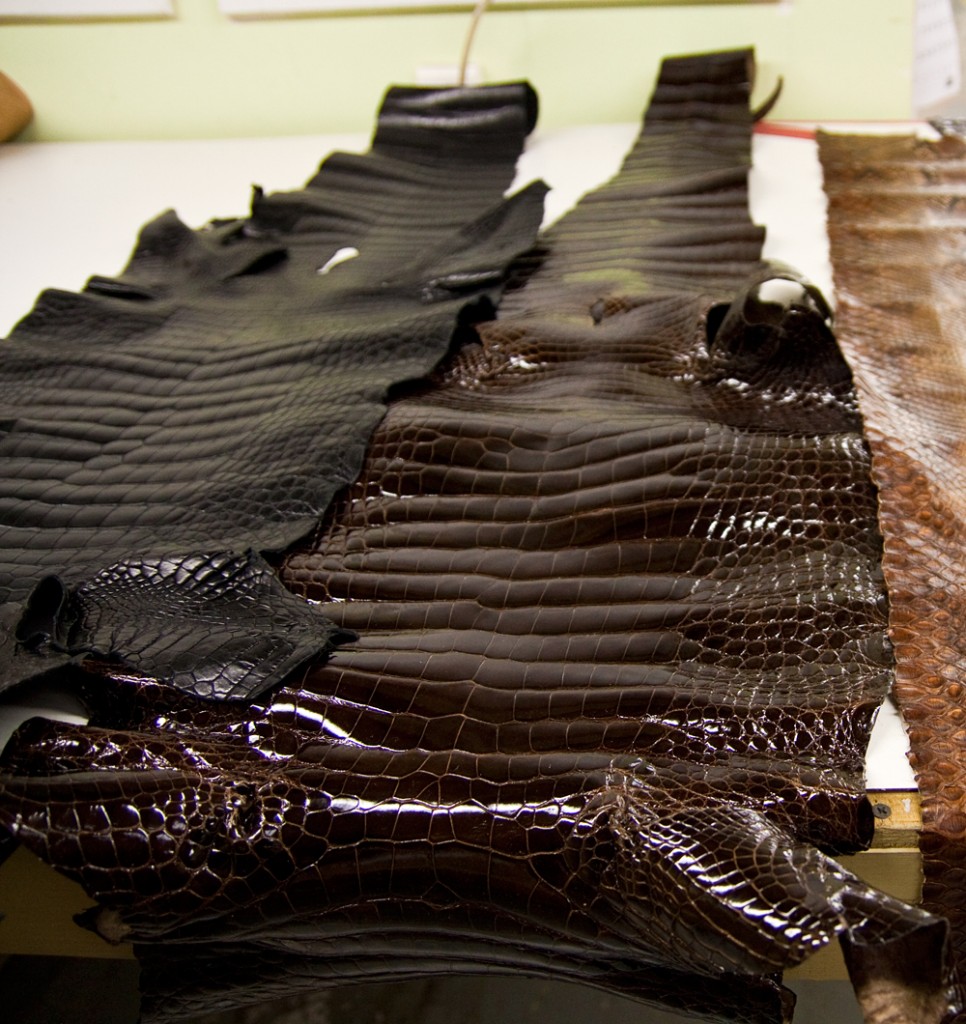
Alligator can be tanned in different colors and different finishes. For today’s belt, we are going with a good Ozark Mountain color: Walnut.
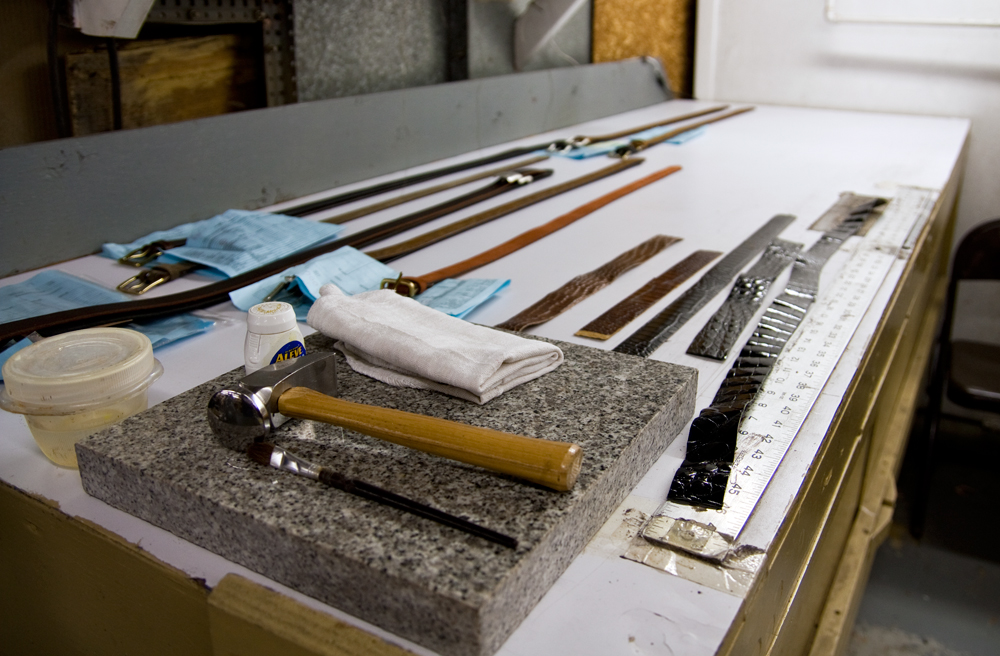
The first step is to building the belt is the alligator leather strip. The hides are cut across the belly, rather than from head to tail, which allows a more advantageous yield. By then splicing these pieces together, the final alligator strip will a more interesting variation in grain. Each strap ends up as ‘one of a kind’ that contains large, rectangular grain from the belly, as well as smaller, oval grain from the sides.
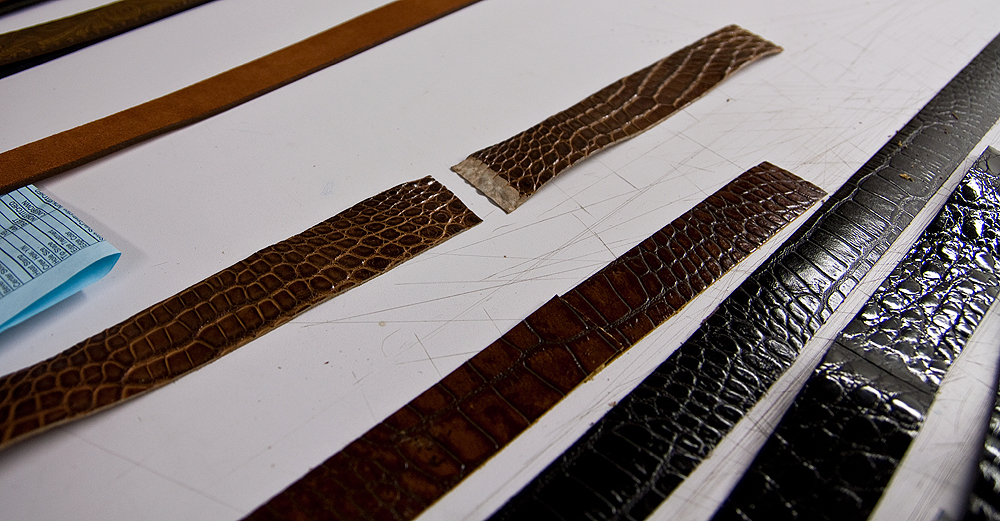
The horizontal cut alligator pieces are hand-combined to form a continuous strap. The level of detail and craftsmanship required to make the alligator strap is beyond expert level. Alligator leather is durable, and the variation in grain takes well to the hand combined construction.
There are two pieces to an alligator belt – the newly hand-combined alligator strip and the leather lining. This is what separates a ‘ridiculously great’ alligator belt from the others. Martin’s all have all natural, saddle-grade leather that effectively does the ‘work’, and the alligator leather is the decoration. Saddle leather is tanned in an ‘old world’ manner that allows the final product to possess an extremely durable quality and develop a softer hand and a darker patina with age. You could call that it’s character.
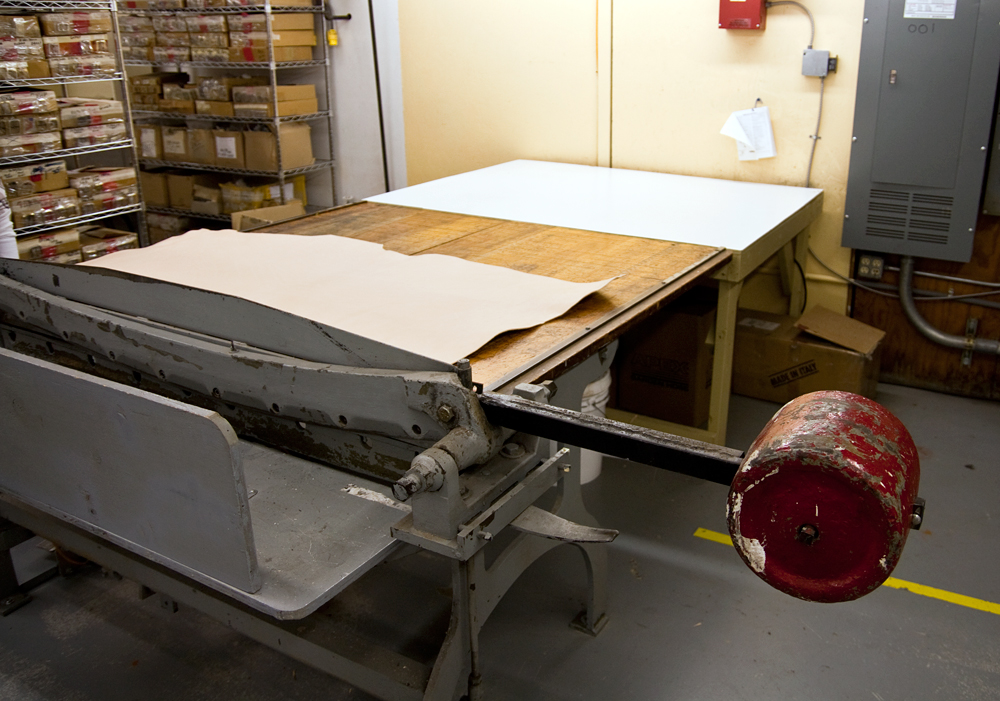
The saddle leather hides must first have a straight edge put on them with this guillotine (giant paper cutter-like blade).
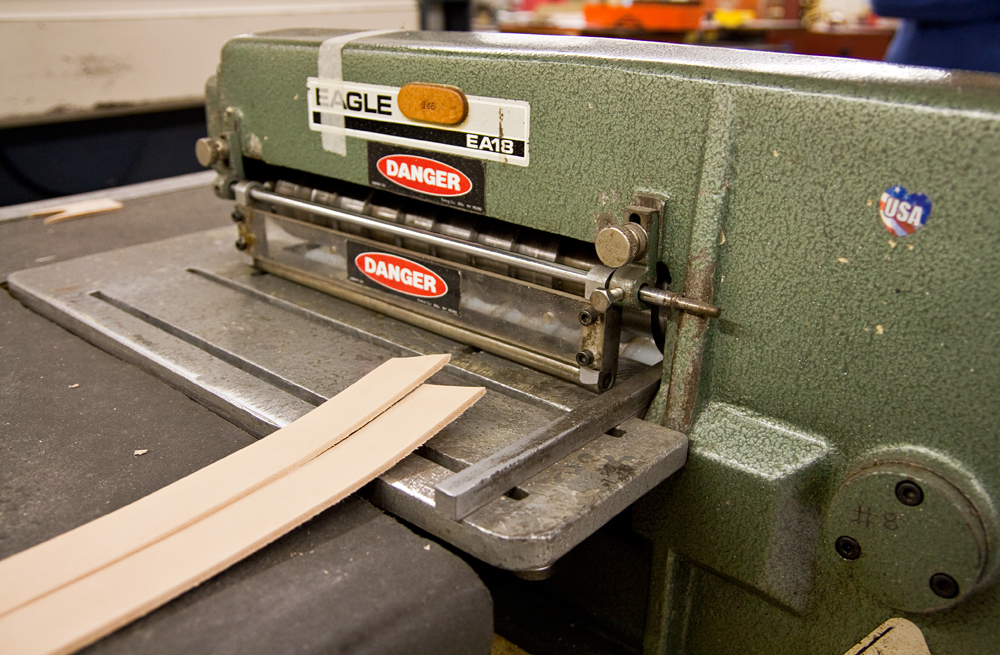
The lining is then put through this strap cutter, which cuts the width of each strap to the exact millimeter.
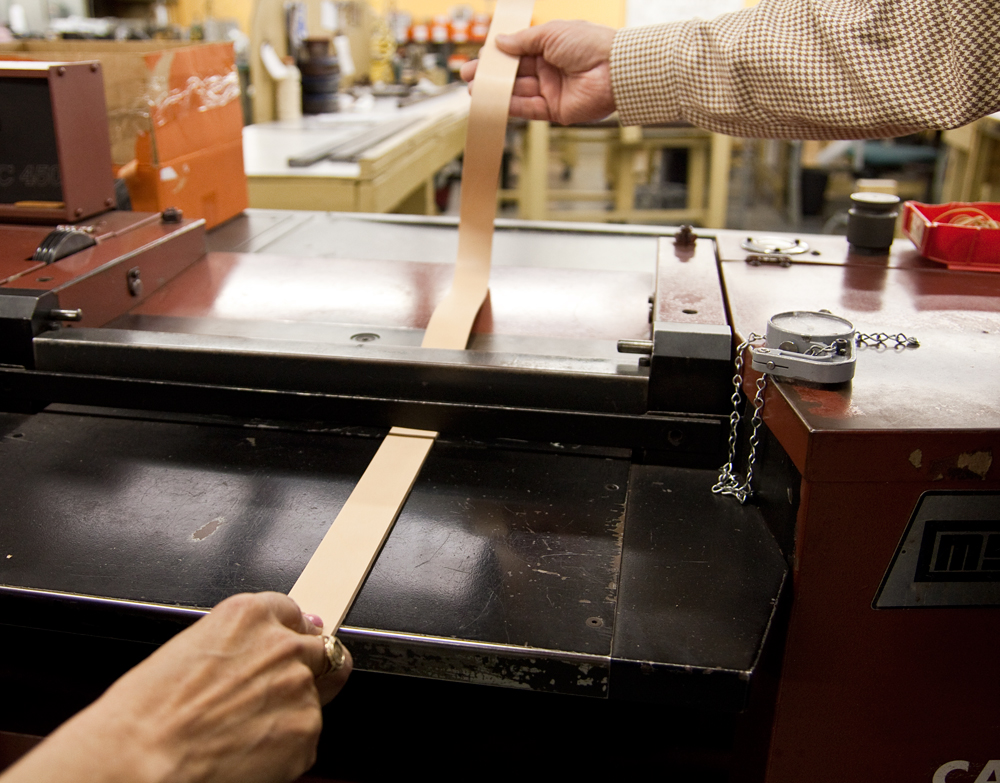
Every liner strip must be put through the splitting machine to ensure that the thickness is exactly the same on each end of the strap.
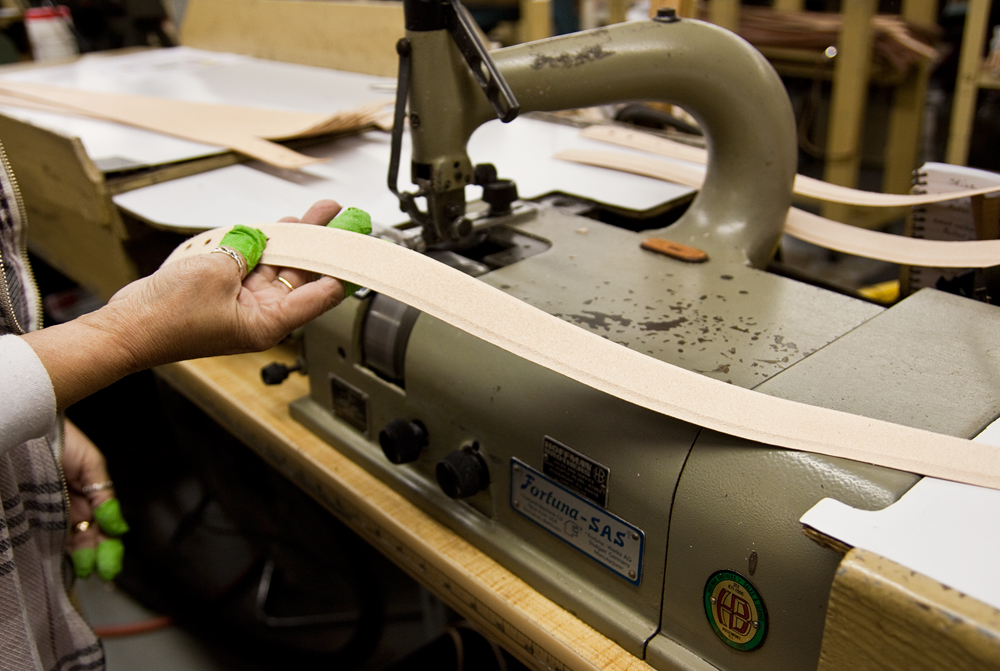
Skiving the edges is the next step. This antique machine from Germany essentially shaves the edges of the lining strip to give the belt its dressy look.
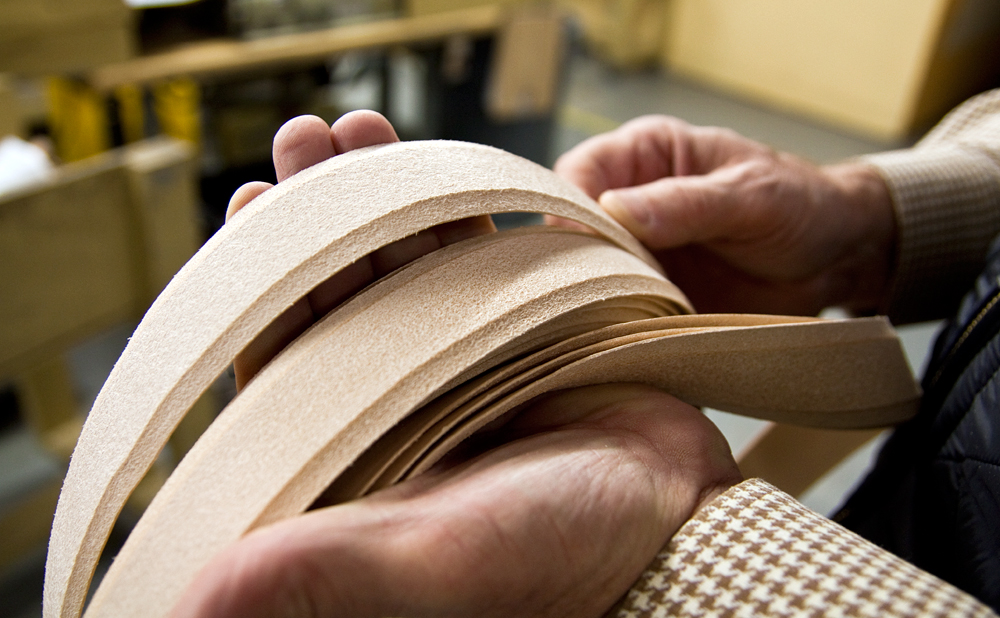
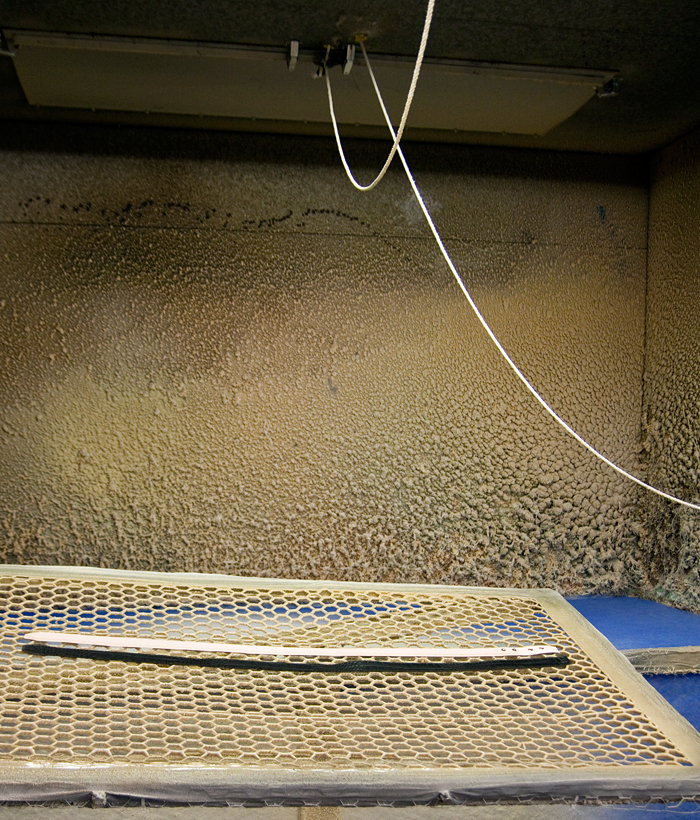
Next, the upper alligator and lining strips are coated with a water-based adhesive.
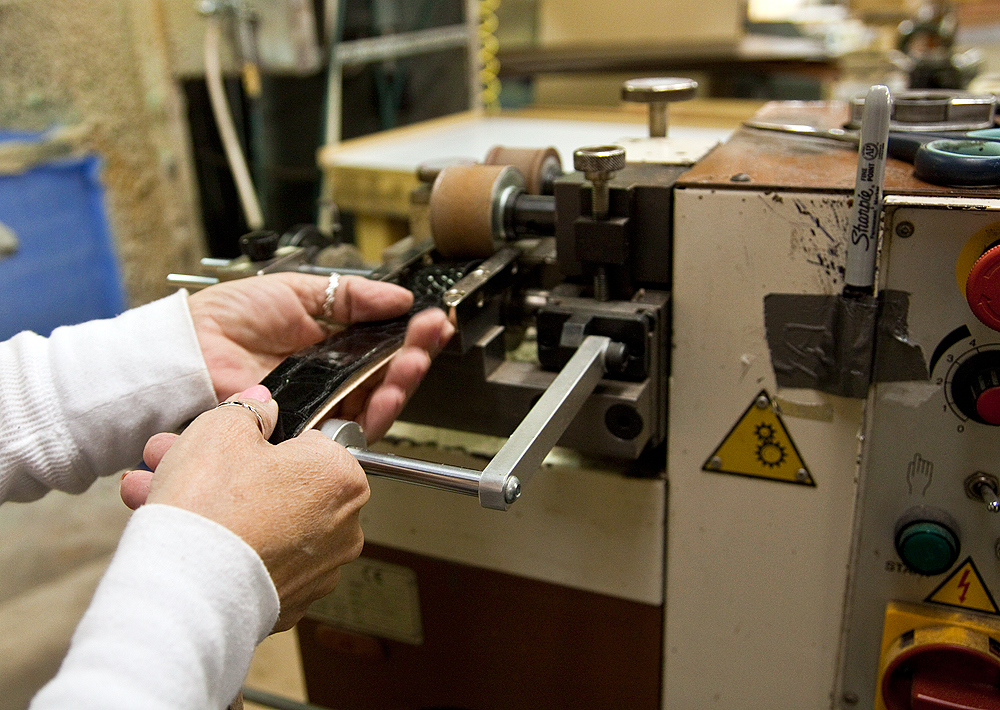
Alligator, meet the leather lining strip. The alligator is adhered (slowly) to the leather strap and pressed together by a profile roller. It’s starting to look like a belt…
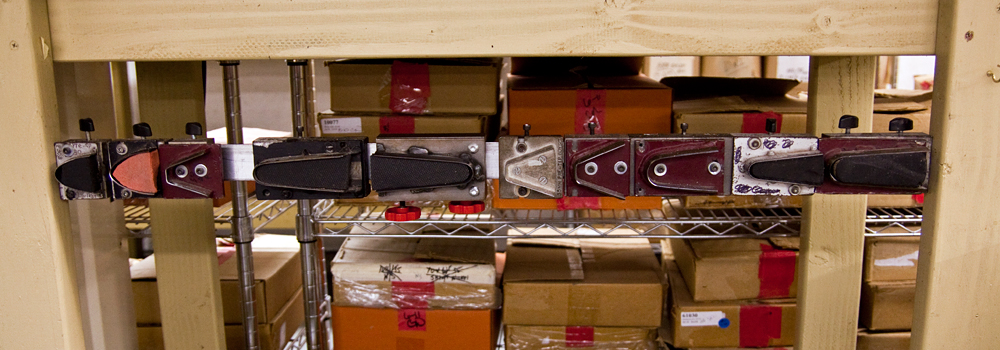
Finishing the top and buckle end is very important. There are dies that are used to do the final cuts. Many years ago, Martin purchased a considerable amount of highly specialized leather equipment in Italy that is still in use today.
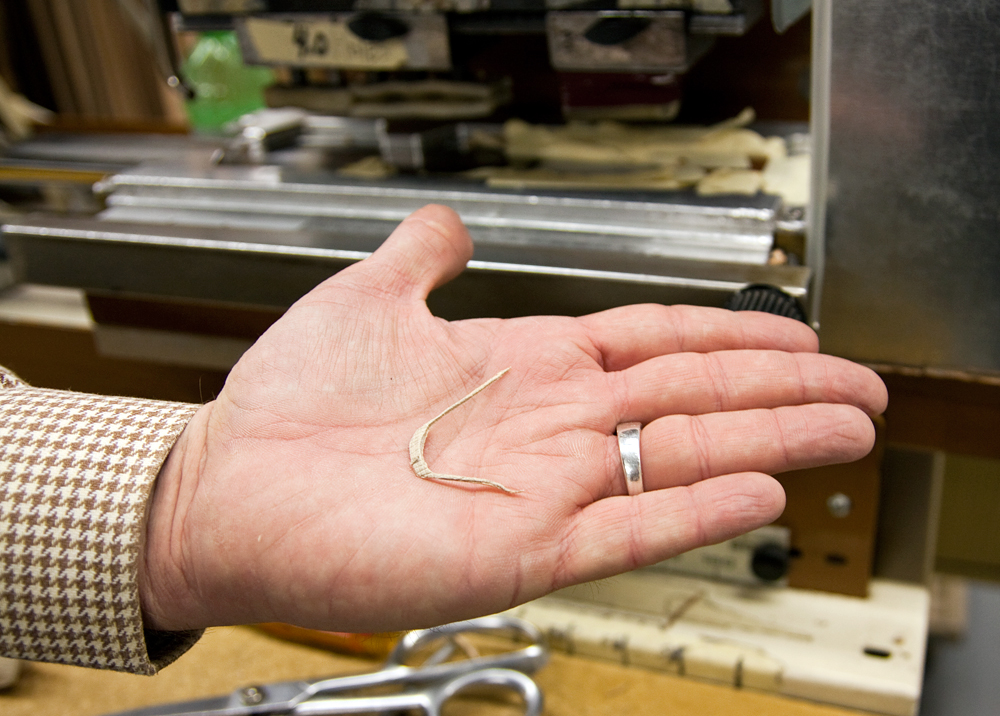
Cutting the tip.
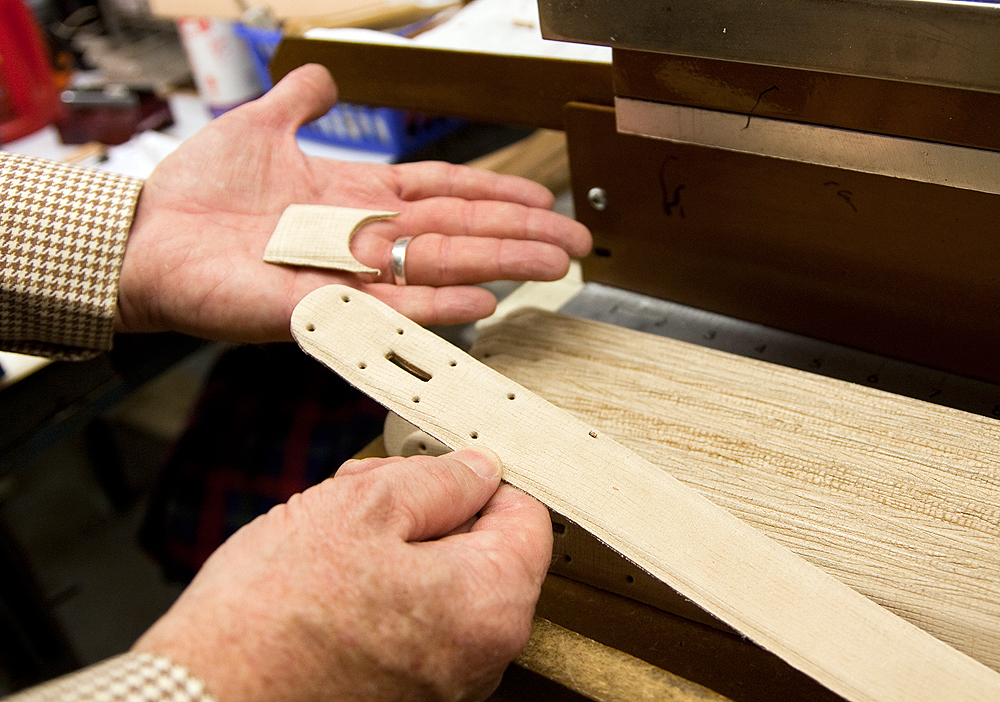
Cutting the buckle end; the eight holes are for sewing the buckle on by hand…a nice touch if you’d like to know that hand craftsmanship was the key to creating your heirloom piece.
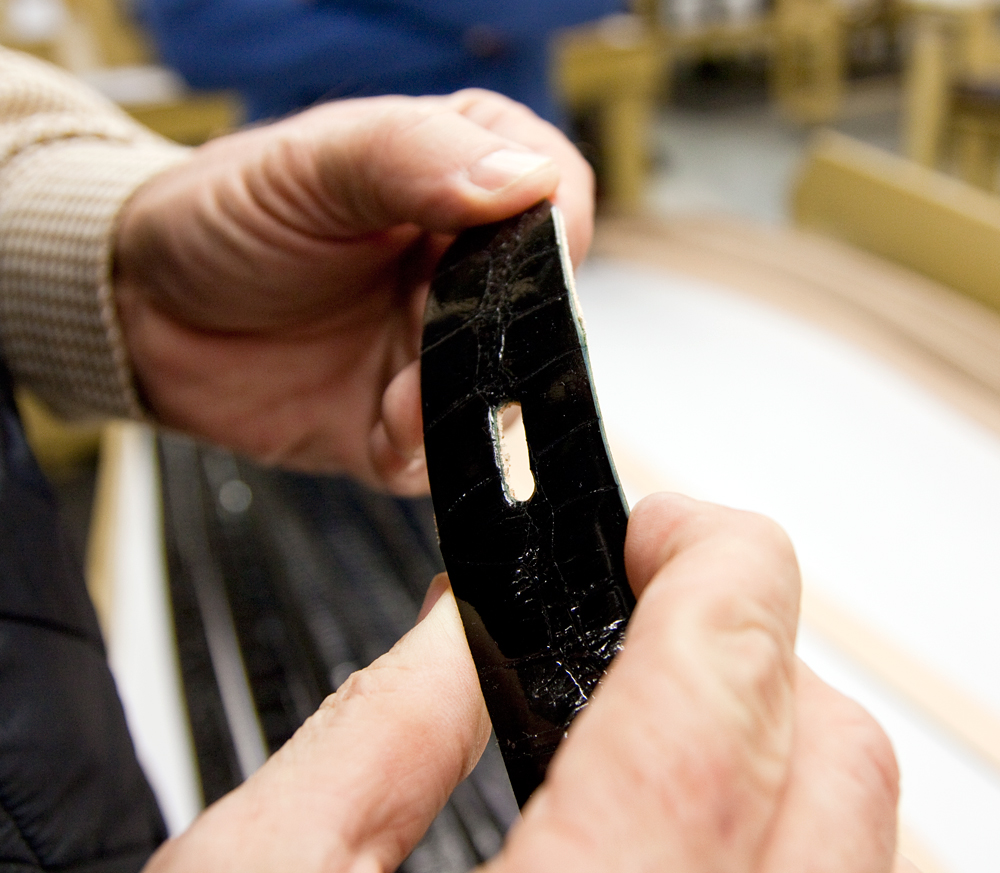
You can’t see the hidden snaps from the front of the belt. Martin perfected it.
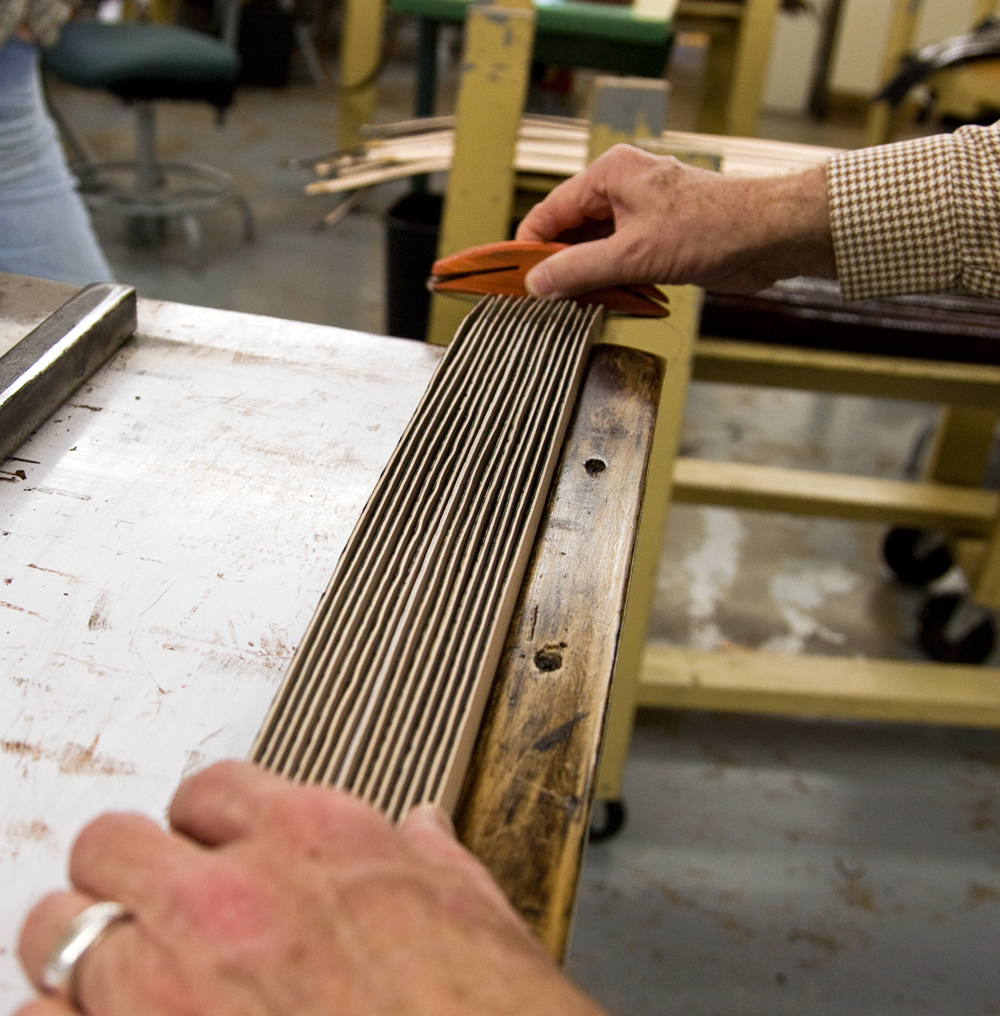
The sides of the belt are lightly sanded to prepare them for the edge stain.
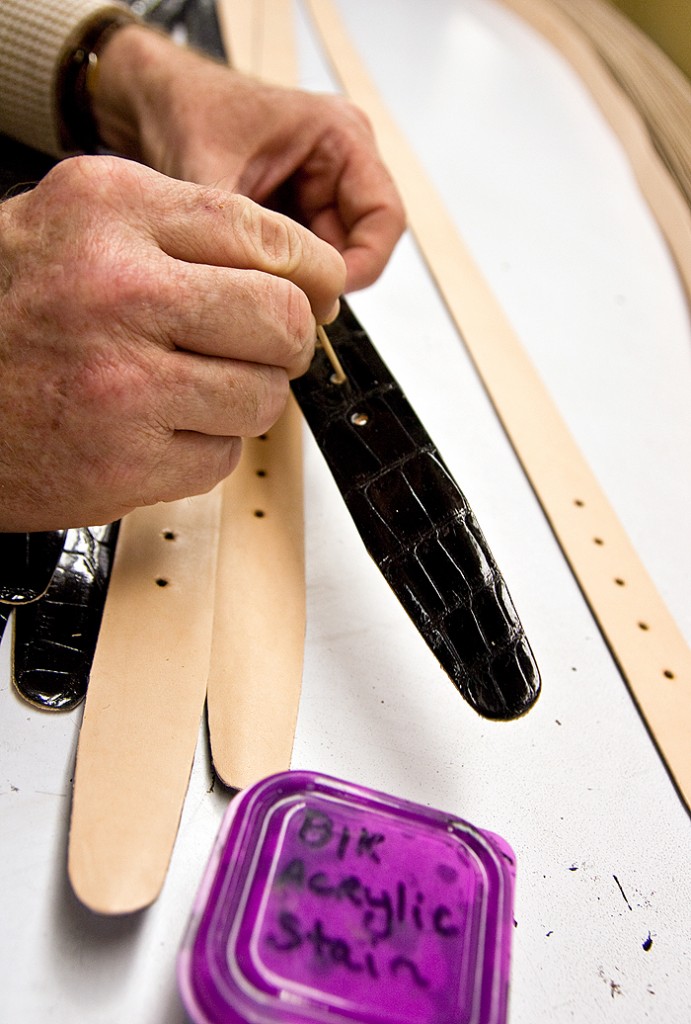
Every detail is covered. The holes are hand stained with a toothpick. Every single hole. Why a toothpick? It is the best applicator, as it doesn’t absorb too much stain and create a mess on the leather lining strip.
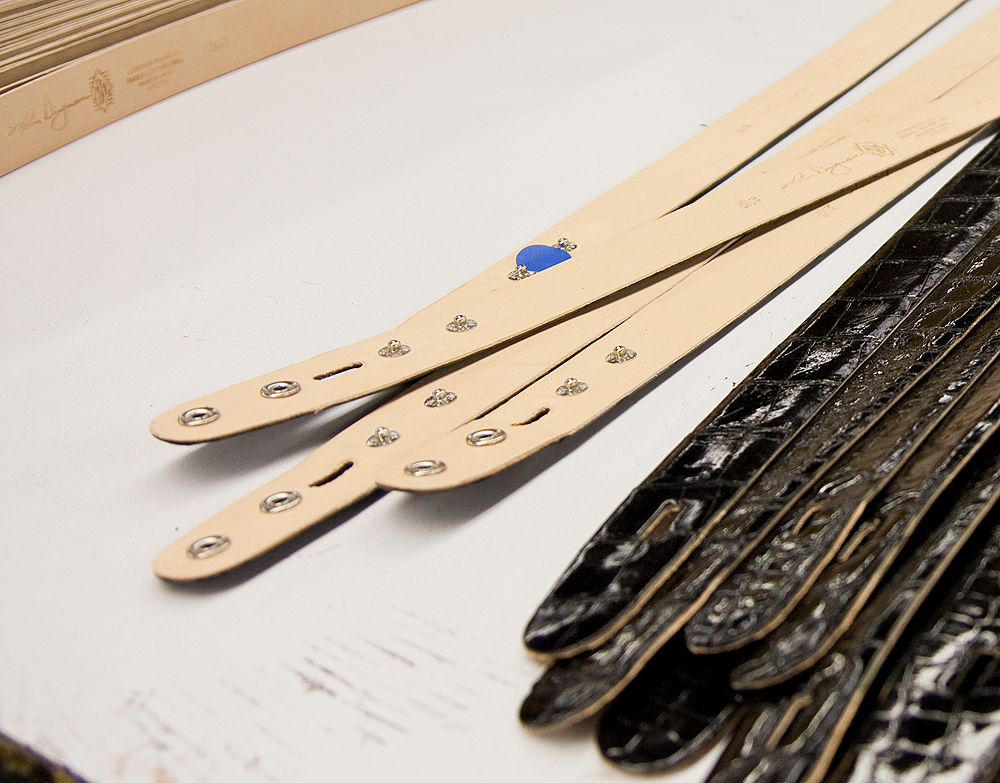
Hidden snaps.
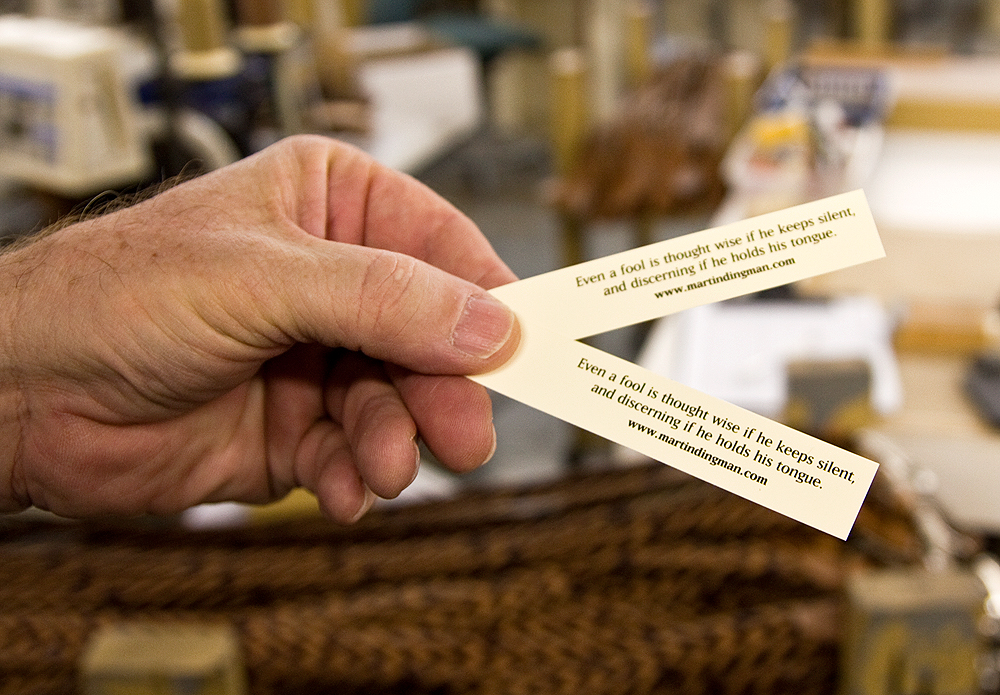
Martin includes an inspirational message snapped to each belt.
Each alligator belt that leaves the Martin Dingman workshop has been carefully built with love by hand by expert craftsmen. There is a reason that these belts cost what they do – they will stay with you for many years to come. The end result is a personal leather accessory so fine, that will outlive the original owner. Isn’t that the point of an heirloom piece?
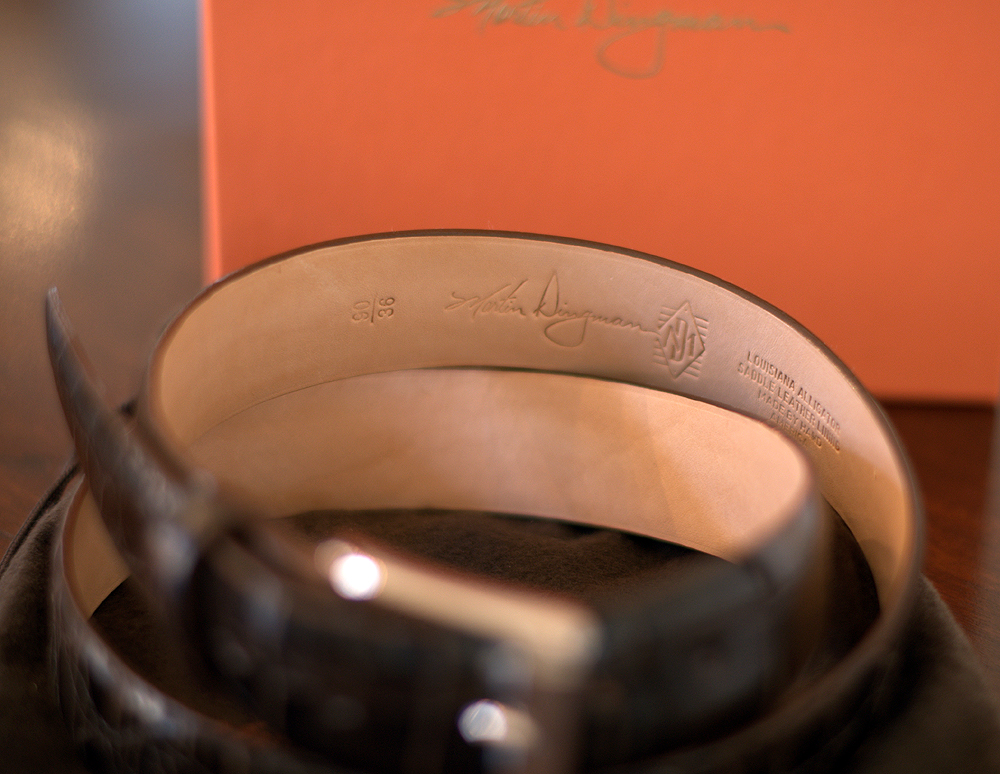

Handmade American alligator belts are available from Martin Dingman.
Special thanks to the folks at Garden & Gun for posting this on their blog.

Awesome
Looks like an amazing belt!
I own a Martin Dingman belt and I strongly recommend the Dark Brown Alligator belt. It’s a timeless piece of craftsmanship!
A very good article.Gives alot of fashion sense.